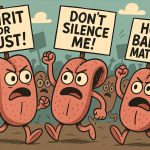Welcome readers! Please subscribe through the button on the right.
(Read this series from its beginning here.)

The second example is from Pope Paul VI. On October 15, 1976, Pope Paul VI issued a declaration on the question of women and the priesthood. The declaration specifically excludes women from the Imago Dei and justifies the exclusion by referring to Jesus as the exclusive revelation of the Divine:
“The Christian priesthood is therefore of a sacramental nature: The priest is a sign, the supernatural effectiveness of which comes from the ordination received, but a sign that must be perceptible and which the faithful must be able to recognize with ease. The whole sacramental economic is in face based upon natural signs, or symbols imprint upon the human psychology: ‘Sacramental signs’, says Saint Thomas, ‘represent what they signify by natural resemblance.’ The same natural resemblance is required for persona as for things: when Christ’s role in the Eucharist is to be expressed sacramentally there would not be this ‘natural resemblance’ which must exist between Christ and his ministry if the role of Christ were not taken by a man. In such a case it would be difficult to see in the minister the image of Christ. For Christ himself was and remains man.” (Franjo Cardinal Seper; Vatican Declaration, published February 3, 1977)
According to this declaration, because Jesus was male, those who represent Jesus sacramentally must also be male. It is only one step further to state that because Jesus was male and Jesus is the express revelation of God, God is also exclusively male.
Patriarchal hierarchy has been deeply ingrained not only through teachings based on Jesus’ exclusive male gendering of the Divine, but also the Second Testament practice of describing the church as the bride of Christ. With Christ superior to the church and the church subservient to Christ, the symbols of a male Jesus and a female church unhealthfully reinforce the false belief that men are superior to women and women are subservient to men. This doesn’t even begin to address how harmful a binary, exclusive understanding of gender can be.
(Read Part 3)













